Ask Ethan: what is space time?
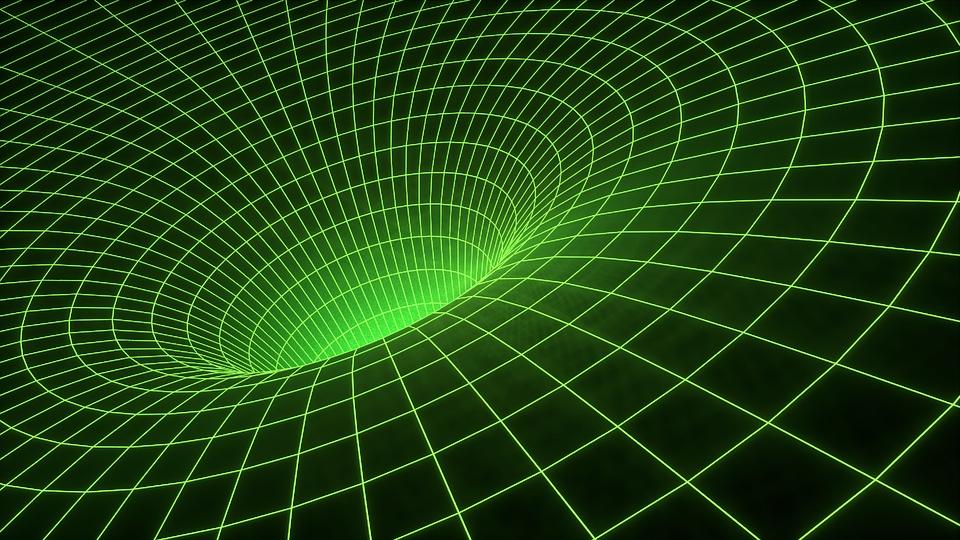
Everyone has heard about things related to the understanding of the device of the Universe: Schrödinger's cat, twin paradox, E = mc 2 . But, despite its 100 years of existence, the general theory of relativity - the greatest achievement of Einstein - remains mysterious for everyone, from ordinary people to undergraduate and graduate students studying physics. This week, our reader wants to clarify this question:
Could you somehow write a story explaining to the average person about the metric used in GR?
Before we get to the "metrics", let's start from the very beginning, and discuss our concepts related to the Universe.
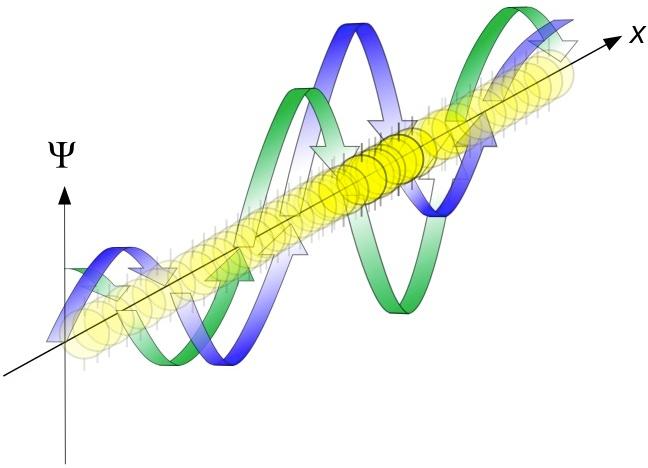
Quanta, be it waves, particles, or something in between, have their defining properties. But they need a scene in which they interact and tell the story of the universe.
At the fundamental level, the Universe consists of quanta — entities with physical properties like mass, charge, momentum, etc. - able to interact with each other. A quantum can be a particle, a wave, or something in an intermediate state, depending on how you treat it. Two or more quanta can bind together, forming such complex structures as protons, atoms, molecules, and even humans. Quantum physics may still be a young science, founded mostly in the 20th century, but the idea that the Universe consists of invisible entities that interact with each other was born 2,000 years ago, not later than Democritus Abdersky .
')
But, regardless of what the Universe is made of, its components need a scene on which they can move in order to interact.

Newton's law of the world was replaced by Einstein's general theory of relativity, and was based on the concept of instantaneous interaction at a distance.
In Newton’s universe, the scene was flat, empty, absolute space. The space was fixed, resembling a Cartesian lattice - a three-dimensional structure with axes x, y and z. Time always went with a certain speed and was also absolute. For any observer, particles, waves, quantum, space and time everywhere were perceived the same way. But by the end of the 19th century it was clear that Newton’s concept had flaws. Particles moving almost at the speed of light, felt time (it slowed down), and space (it shrank) differently compared to a particle that did not move slowly or at all. The energy and momentum of the particle suddenly became dependent on the reference system, from which it followed that space and time were not absolute — how you perceive the Universe depends on how you move.

Light clocks operate at different speeds for different observers moving relative to each other, due to the constancy of the speed of light.
From here came the special theory of relativity: some things were invariant, for example, the rest mass of a particle or the speed of light, while others are converted depending on how you move through space and time. In 1907, the former professor of Einstein, Hermann Minkowski, made a brilliant breakthrough: he showed that space and time can be expressed by one formula. In one fell swoop, he developed the space-time formalism. This gave the particles a stage in which one can move through the Universe and interact with each other. But gravity didn't go in there. The scene he developed, which to this day is known as the Minkowski space, describes the entire STR, and provides the basis for most of the quantum calculations that we carry out.

Usually, quantum field theory calculations are carried out in a flat space, but GR goes further and introduces a curved space. There such calculations are much more complicated.
If gravity did not exist, Minkowski space-time would give us everything we need. Space-time would be simple, non-twisted, and just give matter a scene in order to move and interact. It could only be accelerated through interaction with another particle. But in our Universe there is a force of gravity, and it is Einstein’s equivalence principle that told us that if you do not know what accelerates you, then gravity acts on you just like any other acceleration.

The same behavior of a ball falling on the floor in an accelerating rocket and on Earth is a demonstration of the Einstein equivalence principle
It was this revelation and its mathematical connection with the space-time of Minkowski that led to the appearance of GR. The main difference between the Minkowski space in STR and the curved space appearing in general relativity is the mathematical formalism known as the metric tensor . Sometimes it is called the Einstein metric tensor or the Riemannian metric. Riemann was a 19th-century mathematician (a former Gauss student — perhaps the greatest mathematician), and he built a formalism describing the existence of fields, lines, arches, and distances in an arbitrarily curved space of any dimension. Einstein (and his assistants) took almost ten years to cope with the complexities of mathematics - but they did everything, and we had GTR. This theory describes our Universe with three spatial and one temporal dimension in which gravity exists.
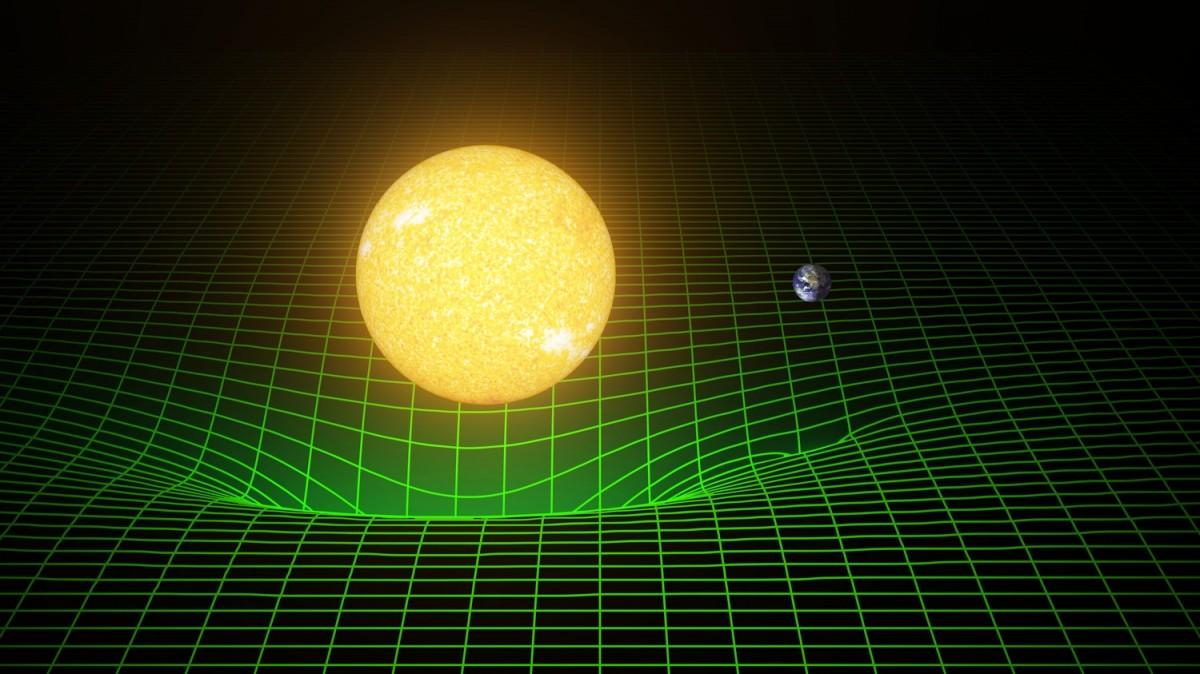
The curvature of space-time gravitational masses
The metric tensor determines the curvature of space-time. Its curvature depends on matter, energy and the stresses they have. The contents of the universe determines its space-time curvature. It is also true that the curvature of the Universe determines how matter and energy will move through it. We like to believe that the moving object will continue to move - Newton's first law . We imagine this as a straight line, but the curved space tells us that instead, the object moves along a geodesic curve - a certain way of a curved line, corresponding to non-accelerated motion. The irony is that this curve is not necessarily a straight line, which is the shortest path between two points. Even on a cosmic scale, one can see how the curvature of space-time manifests itself in the presence of extraordinary masses capable of bending the light coming from behind them, which can sometimes lead to the multiplication of images.
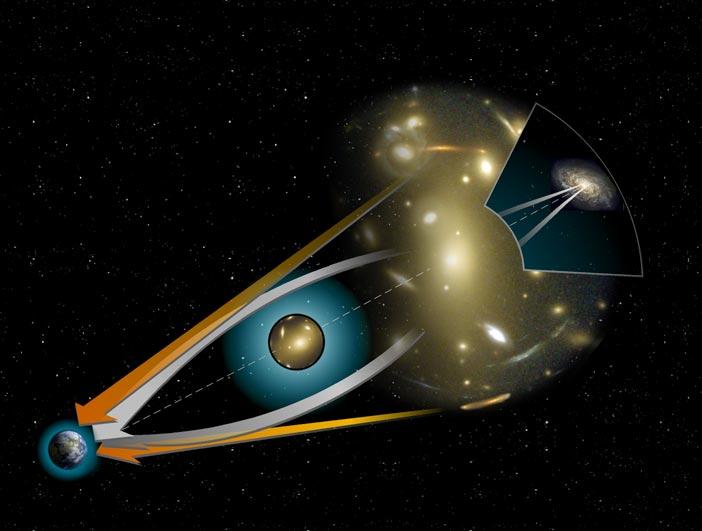
Illustration of gravitational lensing and mass distortion of starlight.
Many different aspects of physics contribute to the metric tensor in GR. We imagine gravity as a result of the influence of the masses: the location and magnitude of different masses determines the gravitational interaction. In GR, this corresponds to mass density, and indeed contributes - but only as one of the 16 components of the metric tensor! It has components related to pressure (radiation pressure, vacuum pressure, pressures created by rapidly moving particles), and three additional aspects (one for each spatial dimension) that contribute. And finally, there are six more components that speak about how volumes change and deform in the presence of masses and tidal forces, as well as how these forces are bent by the shape of a moving body. This applies to everything from planets like Earth and neutron stars to massless waves moving in space — gravitational radiation.

All masses move in space-time relative to each other, and emit gravitational waves - the ripples of space-time itself.
You may have noticed that 1 + 3 + 6 ≠ 16, and 10; and you are observant! The metric tensor, albeit an entity of dimension 4 x 4, but it is symmetric, that is, it has four diagonal components (density and pressure) and six independent components that are not on the diagonal (volume and deformation components). The remaining six non-diagonal components are uniquely determined by symmetry. The metric speaks about the relationship between matter and the energy of the Universe and the curvature of space-time. The unique possibilities of GR show that if you know where all the matter and energy is in the Universe and what they do, you can determine the whole evolutionary history of the Universe - past, present and future.
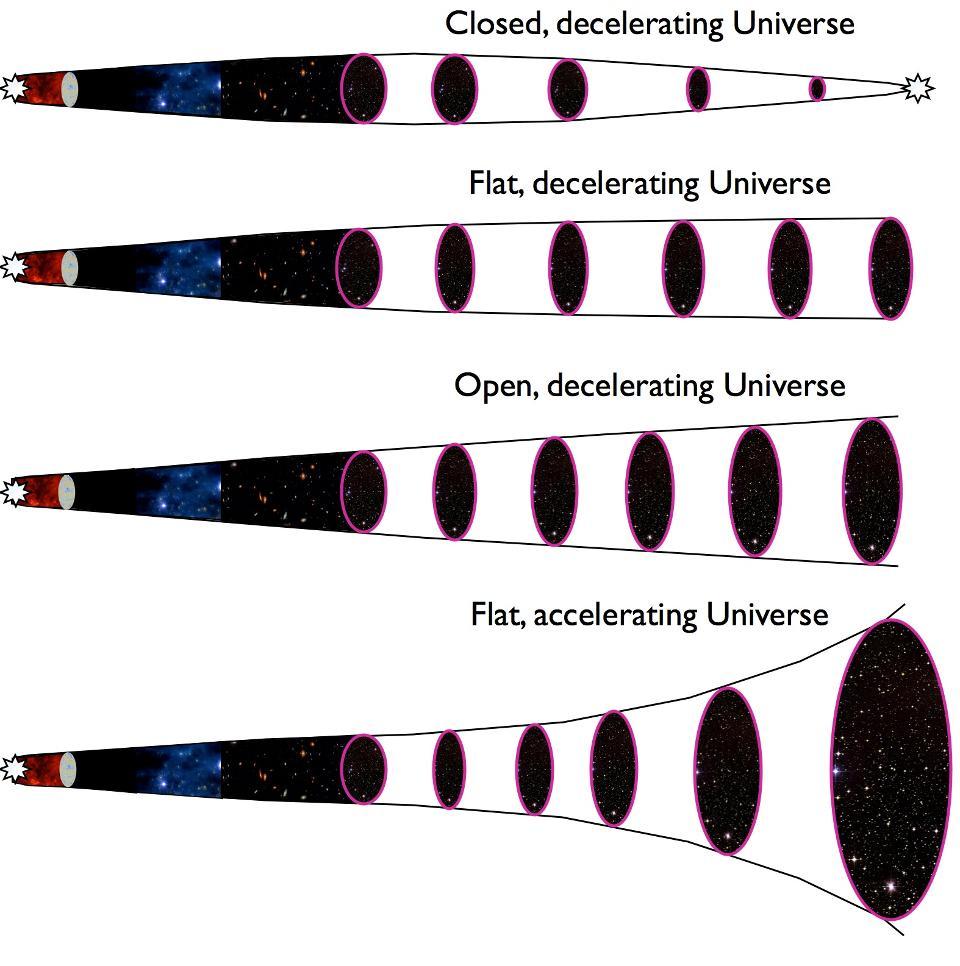
Four probable fate of the universe. The lowest option best fits the data: Universe with dark energy
That is how the area in which I work, cosmology, a division of theoretical physics, began! The discovery of the expanding universe, its emergence from the Big Bang and the dominance of dark energy, which will lead to its cold and empty fate - all this can be understood only in the context of the general theory of relativity, which means understanding the key interaction between matter / energy and space-time . The Universe is a play that unfolds with each interaction of one particle with another, and space-time is the scene on which this play goes. We need to remember only one key counterintuitive thing - the scene is not constant for everyone, but it itself evolves along with the Universe.
Ethan Siegel - astrophysicist, popularizer of science, blog Starts With A Bang! He wrote the books Beyond The Galaxy , and Treknologiya: Star Trek Science [ Treknology ].
Source: https://habr.com/ru/post/370879/
All Articles